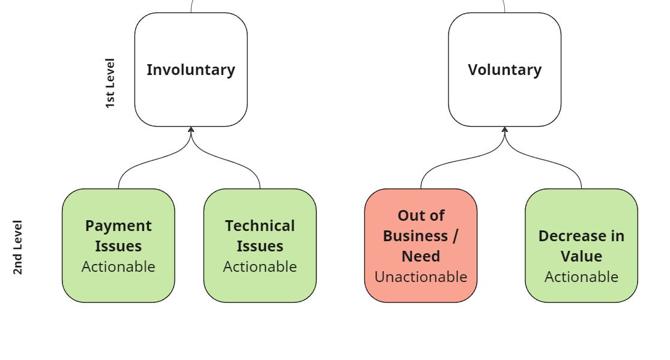Leah’s ProducTea
4M
181

Image Credit: Leah’s ProducTea
How to build a good churn survey
- Churn is the one thing you should get under control in B2B. But many companies underinvest in this critical tool. The author shares the process of getting started with a clean churn survey to understand what’s up in your business.
- The most basic way to understand churn is to separate it into voluntary and involuntary first. Our questions and analysis should capture both dimensions of churn. Examples of voluntary churn are out of business and decrease in value.
- Examples of involuntary churn are payment and technical issues. Your first iteration of a churn survey should cover those four categories. Whenever an answer gets more than 20%, sub-segment it until it stops getting more than 20%. Questions that get underrepresented kicked out to keep the churn survey lean.
- If your churn survey has a dominant Other category, something else is happening, or your survey is badly structured, confusing, and unclear. Include a free text form in the survey to categorize the qualitative feedback as much as possible and potentially create a new question to reduce the number of selections that come from Other.
- There are some problems that you might encounter, people who answer your surveys are always only a sample of a very specific group that has churned and the form you’re asking your questions also influences your data set.
- The author advises using different forms such as in-app surveys, email surveys, qualitative surveys, etc. to get an accurate sample size. Understanding churn and building a good churn survey can guide you quantifiably on what to fix now and what to fix later in your business.
Read Full Article
9 Likes
For uninterrupted reading, download the app